Bio 21 Nancy Millis Building
DesignInc completed the dynamic space of Bio 21 Nancy Millis Building in Melbourne, Australia.
Research facilities can sometimes be perceived as cold, sterile environments by those not closely affiliated with them. The common perception is that scientists go about their work autonomously, with minimal interaction with colleagues. But this simply isn’t the case. Collaboration is not a new concept in science and has been a hallmark of the sector for a long time.
In Australia, for example, multinational biotechnology company CSL was developing antivenoms in collaboration with Melbourne Zoo and the Walter and Eliza Hall Institute (WEHI) as far back as the 1920s. So it makes good sense to position research facilities as dynamic hubs of collaboration driven by workplace strategies around wellbeing. For designers and architects, creating new facilities that promote connectivity and positivity is as important as finding technical design solutions.
DesignInc’s Melbourne studio is one of the sector’s leading innovators and their recently completed Bio 21 Nancy Millis Building, one of the largest biotechnology research centres in Australia (of which CSL is a partner), exemplifies the significance of collaborative practice and healthy work environments in research-based workplace thinking.
The four-level project’s form is a sympathetic response to the constraints of a gently sloping site entirely surrounded by existing buildings, including the Bio 21 David Pennington Building, on the Parkville campus of the University of Melbourne. It sits firmly embedded in its context within a sequence of landscaped external courtyards, with a tapered brick base that steps upwards, uncurling to a two-storey height. A protective screen not only provides the exterior’s primary identity, it also shades the interiors from both the northern and western sun. Indeed, all the internal spaces are oriented towards this north-western facade, which in turn frames the entry courtyard, where the project’s themes of discovery and nature initially express themselves.
While the state-of-the-art facility accommodates laboratories, offices and areas for research, training and industry engagement, it’s the multi-leveled collaboration forum that serves as the scheme’s focal point. This likewise tapering volume features landscaped timber planters on its southern edge, fronting meeting rooms, breakout spaces, terraces and stepped seating. On the northern side, the brick base forms a series of window seat nooks positioned below angled skylights, which along with strategically placed highlight windows, let in plenty of natural light. Fresh air also rises towards openings high in the building’s canopy, passively cooling the interior.
The forum has been informed by the principles of biophilia and conceived as an extension of the building’s other work areas. This refined web of interconnected spaces, vertical circulation and visual connectivity is what makes it so appealing and encourages researchers and all other end users to interact with each other by regularly spending time in it. The strong connection to nature offers a sense of comfort and the multiple settings allow for flexibility in how people choose to work, whether autonomously or in a group. Research doesn’t just happen in a lab and the design supports this forward thinking, prioritizing the wellbeing of all in the process.
Architect: DesignInc
Photography: Dianna Snape

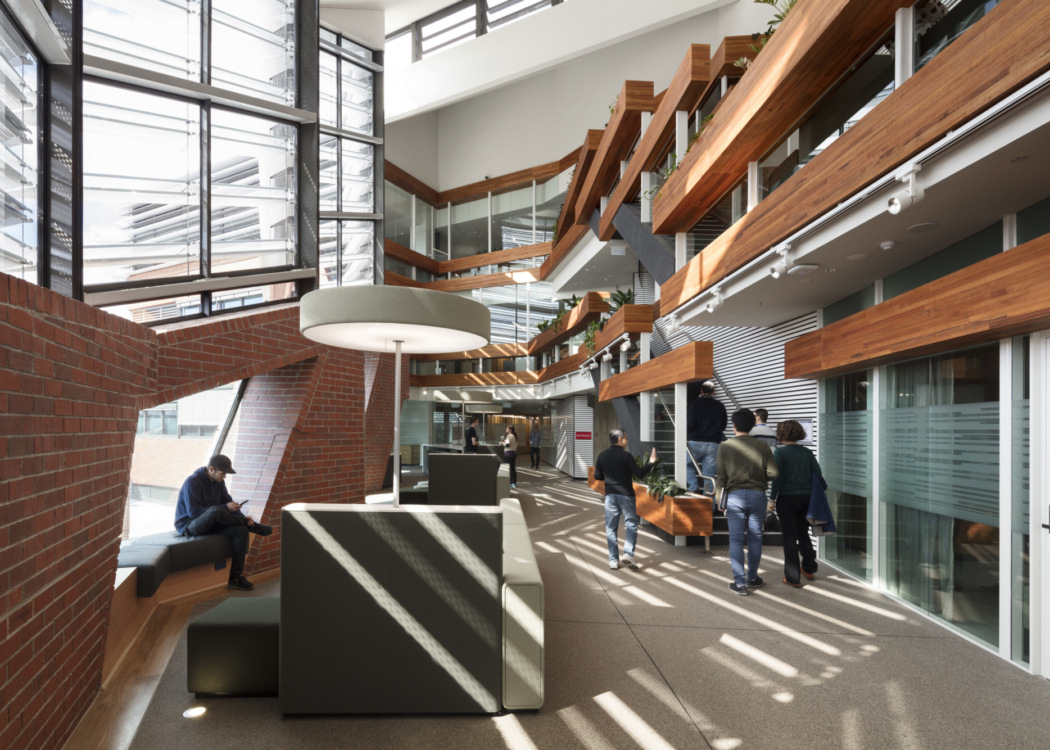
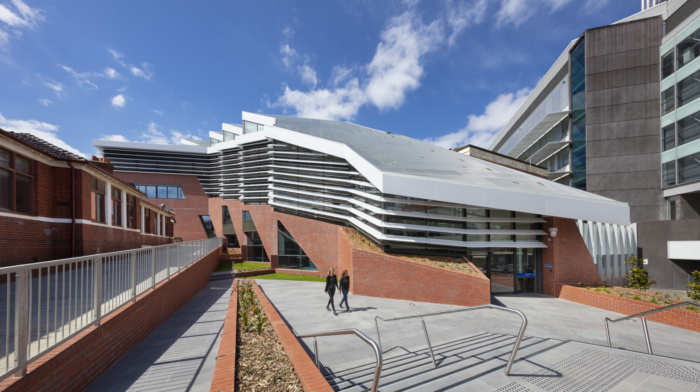
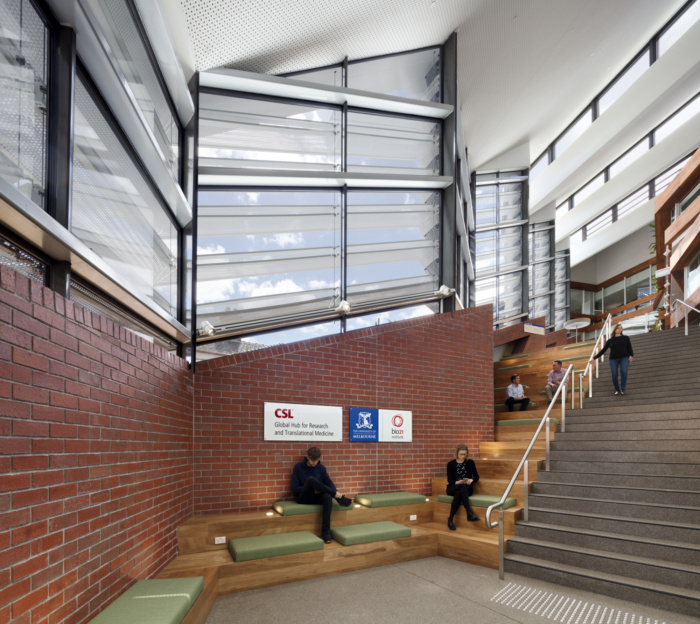
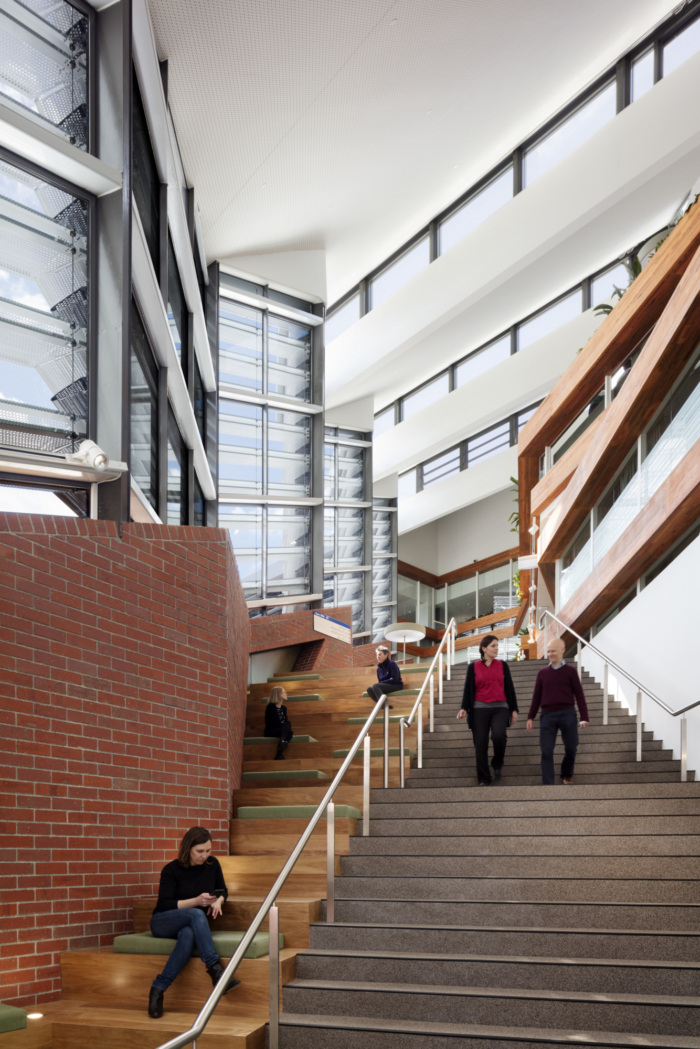
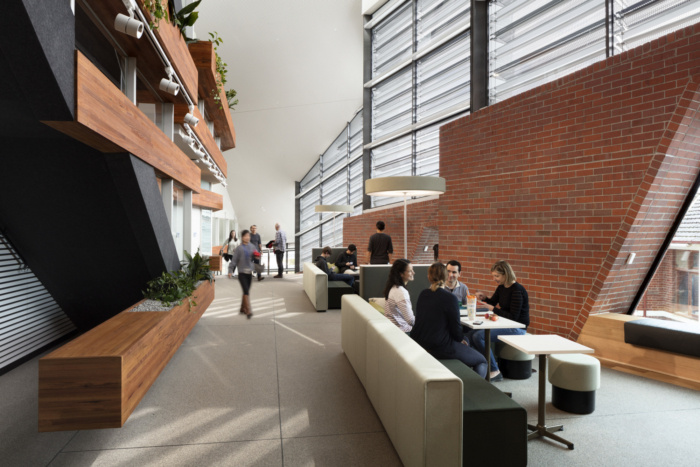
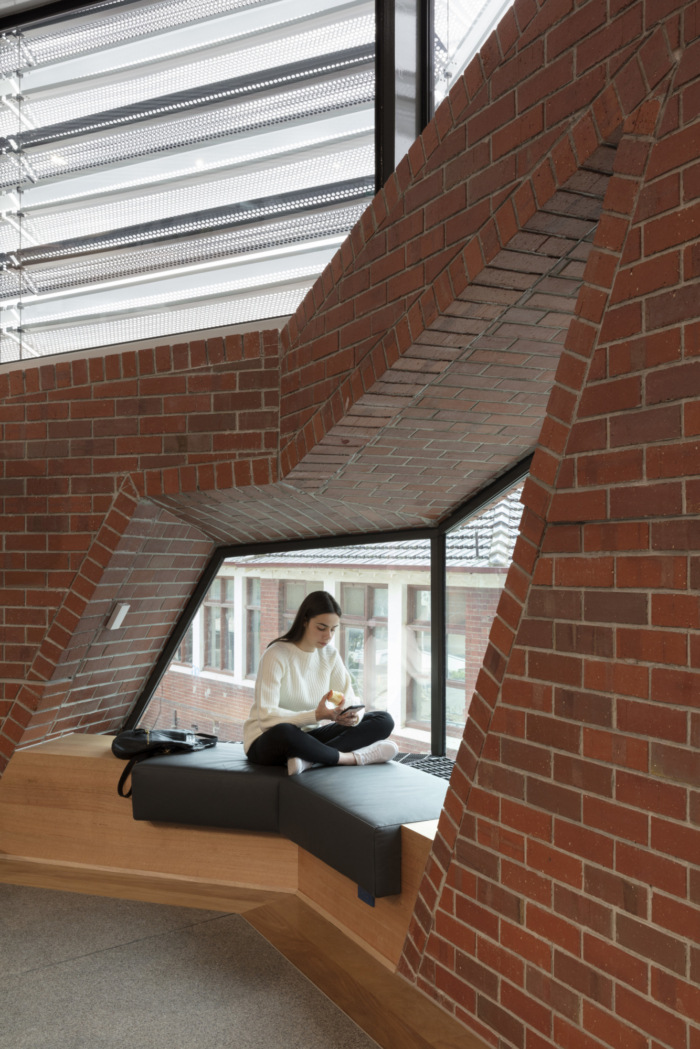

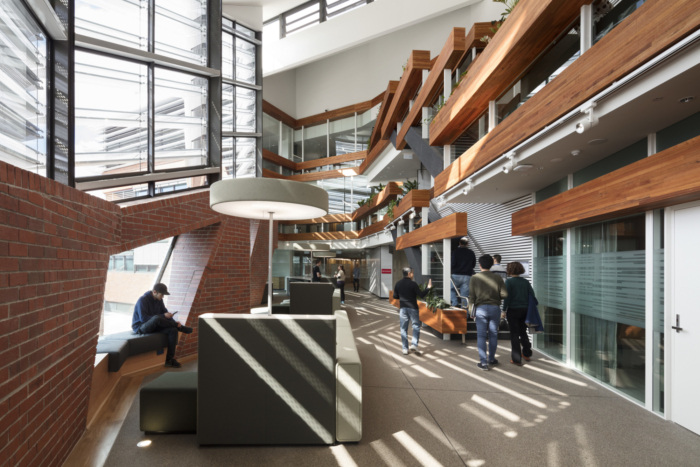
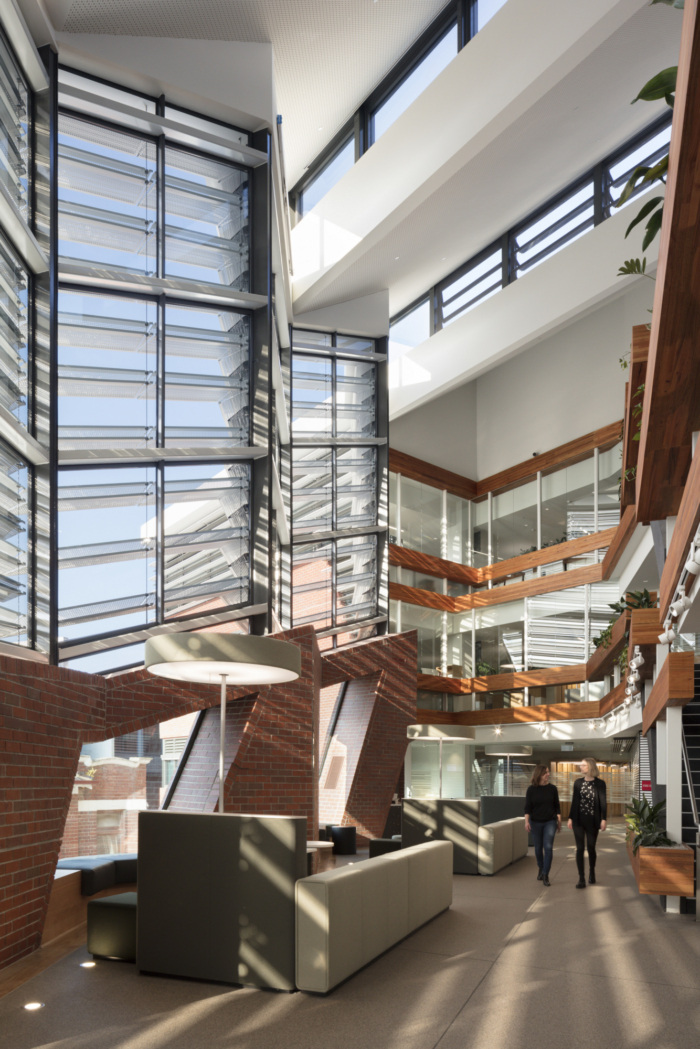
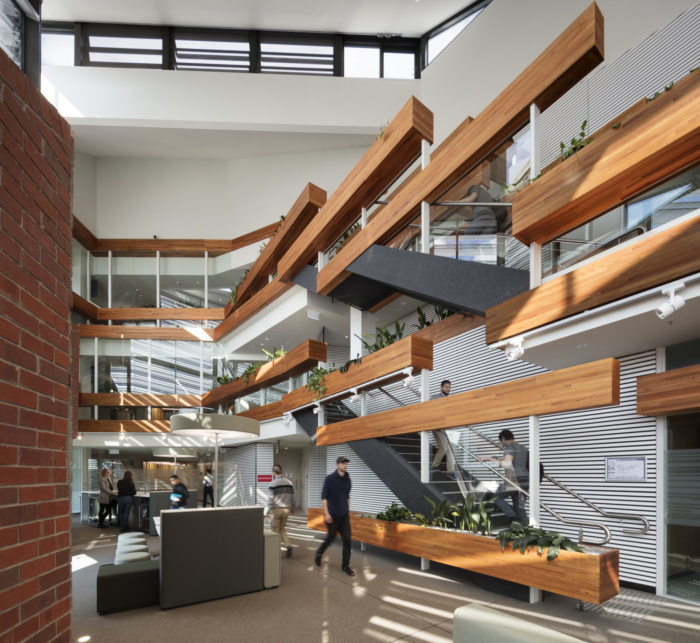
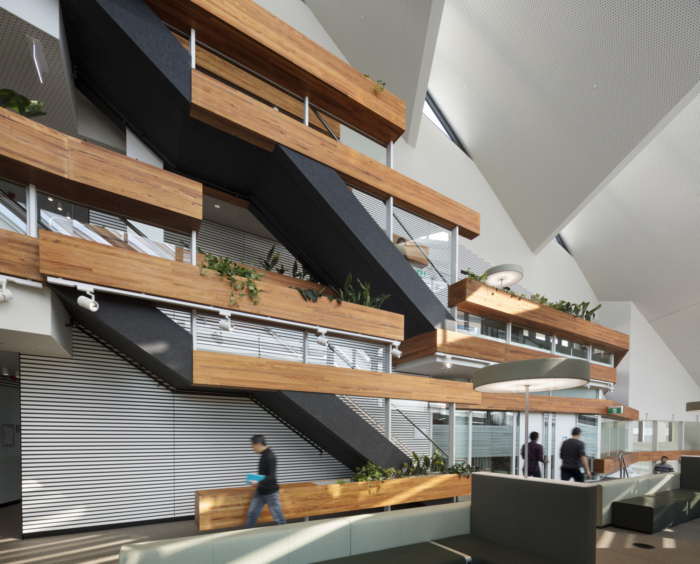


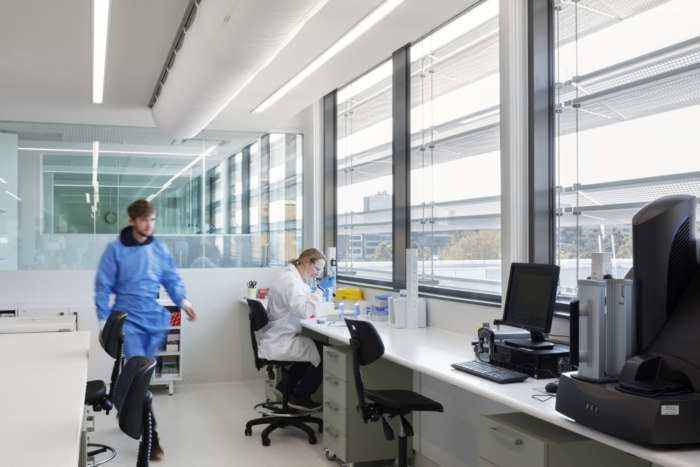
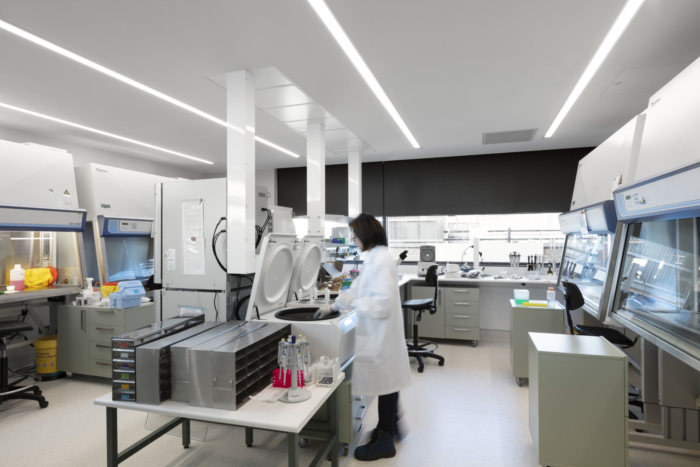




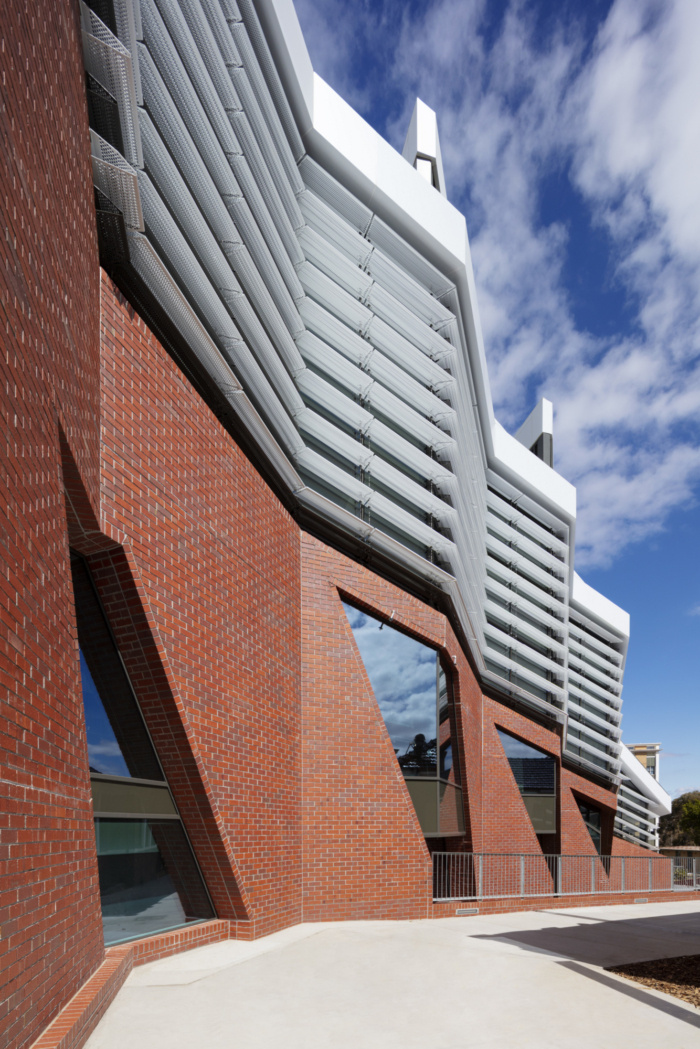




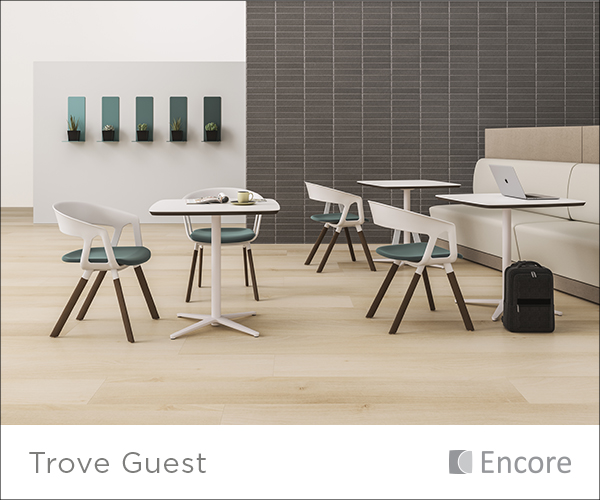






Now editing content for LinkedIn.